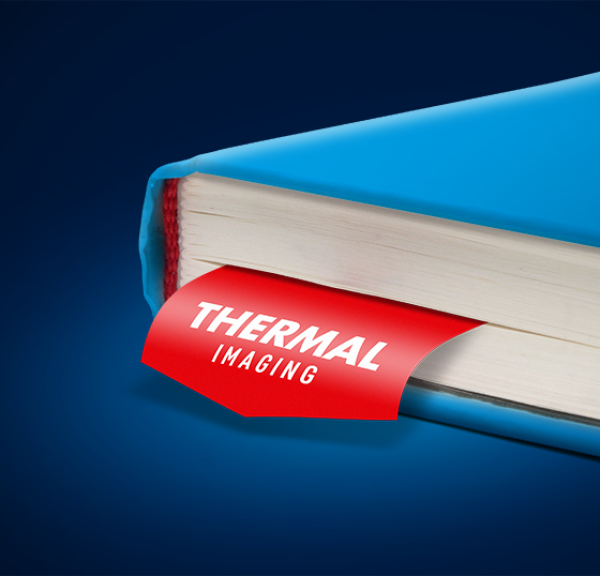Thermal imaging riflescopes, binoculars and monoculars are some of the most advanced optics available to civilians. Many sportsmen and women may not be as familiar with the internal mechanics of thermal imaging as they are with traditional magnified hunting scopes. Thermal imaging isn’t cheap, so those looking to purchase thermal should become familiar with the specifications and features to make sure they purchase a unit that meets all their needs.
To help you understand what thermal is and what we mean when we use certain terms when describing Pulsar thermal devices, we’ve provided this easy-to-understand glossary of thermal imaging terminology and definitions.
What is Thermal Imaging?
Thermal imaging technology reads heat signatures using infrared thermography to detect and “see” objects in any light environment—even total darkness.
How Does Thermal Imaging Work?
Thermal imagers use a microbolometer sensor consisting of resistive vanadium oxide or amorphous silicon film and a special Germanium lens to focus infrared light onto the microbolometer sensor. The vanadium oxide and amorphous silicon detect electrical resistance changes related to temperature. These changes in the temperature are converted into a very detailed temperature pattern of electrical signals called a thermogram. The thermogram is then sent to a signal processing unit that translates the information so you can see the image.
Microbolometer
A microbolometer is a specific type of uncooled bolometer (a type of instrument that measures radiant energy) used in thermal imaging devices. The microbolometer is made of a range of pixels.
Germanium Lens
Germanium is a silver/gray/white metallic chemical element member of the carbon group. Infrared waves can pass through it and it has a high refractive index and low optical dispersion.
Pixel
A pixel is the smallest unit that makes up a digital image, they are either a dot or a square on your display screen.
Pixel Pitch
The pixel pitch refers to the amount of space between two pixels. It is measured in micrometers or microns from the center of one pixel to the next.
Micron
A micron is the unit of measurement of infrared radiation wavelengths, pixels are also measured in microns.
Infrared
Infrared light or infrared radiation (IR) is a form of electromagnetic radiation produced when atoms absorb and then release energy. IR has longer wavelengths than visible light, so we typically can’t see it.
The visible light spectrum, light we can detect with our eyes, ranges from 380 nm to 750 nm (violet to red) is a small portion of the entire electromagnetic spectrum. Infrared spectrum is just next to visible spectrum at a lower energy level.
Heat
Heat is the transfer of internal energy from electromagnetic waves from one area to another.
Digital Zoom
Digital zoom increases the perceived magnification of the thermal or digital device. As digital zoom is applied, the central image is cropped and increased to match the same aspect ratio as the original image. The result is a zoomed-in view of the image of the target, but with a sacrifice in image quality. Higher resolution sensors will be able to achieve higher digital zoom ranges without significant loss of image quality. A low pixel pitch specification will also help maintain image quality when digital zoom is applied.
Frame Rate
Frame rate is the frequency at which an imaging device produces consecutive images. Frame rate is depicted in hertz (Hz) which is one cycle per second. The higher the frame rate, the more motion is captured so images appear smoother. Generally, the human eye will not detect a significant difference in frame rate above 30 Hz. Higher frame rates, however, will enhance the details and clarity of fast-moving targets.
Hertz
Electromagnetic radiation is described by its frequency, which we refer to as Hertz. A Hertz is one cycle per second.
F-Number
The F/number of an optical system is the ratio of the focal length of the lens to the diameter of the front lens and determines the light gathering power of the lens which affects the sensitivity of the system. To have quality sensitivity, it must run a low f/number, typically 1.4 to 2. With a low f/number and a long focal length, thermal devices maintain high sensitivity with increased viewing range.
Focal Length
Focal length is the distance between the entrance lens and the area in the lens where gathered light comes to a point, designated in millimetres. The focal length directly effects how far you can see through your thermal device. Longer focal lengths mean a smaller field of view, but a longer detection range.
AMOLED Display
The Active-Matrix Organic Light-Emitting Diode (AMOLED) is a type of display made of LED and organic compounds used to light up pixels.
NUC (Non-Uniform Correction)
Pixel-to-pixel responsivity produces distortion called FPN (fixed-pattern noise.) Non-uniformity correction is an algorithm that fixes these distorted pixels.
Field of View
The field of view is the amount of space you see through your unit.
For more advanced explanations of specifications and features, click here.
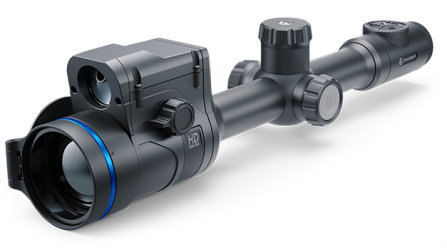 Thermion 2 LRF XL50
Termovizoriniai taikikliai
Thermion 2 LRF XL50
Termovizoriniai taikikliai
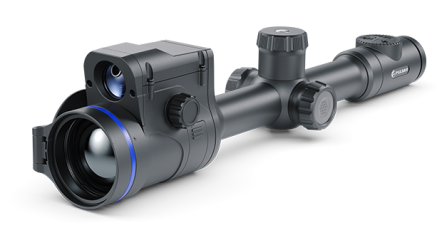 Thermion 2 LRF
Termovizoriniai taikikliai
Thermion 2 LRF
Termovizoriniai taikikliai
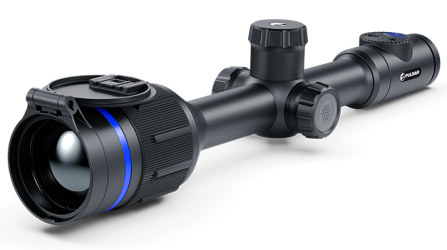 Thermion 2
Termovizoriniai taikikliai
Thermion 2
Termovizoriniai taikikliai
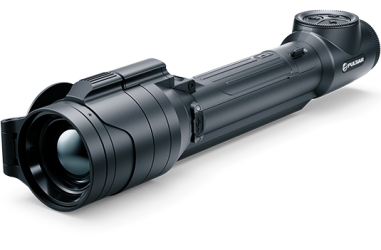 Talion
Termovizoriniai taikikliai
Nauja
Talion
Termovizoriniai taikikliai
Nauja Merger LRF XT50
Termoviziniai žiūronai
Merger LRF XT50
Termoviziniai žiūronai
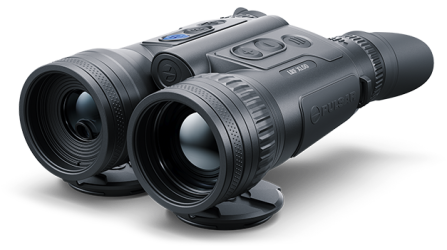 Merger LRF XL50
Termoviziniai žiūronai
Merger LRF XL50
Termoviziniai žiūronai
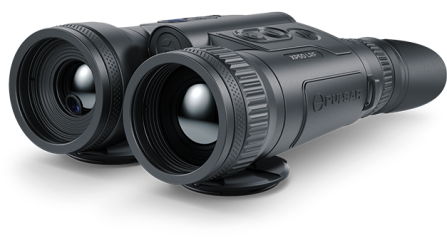 Merger LRF XP50
Termoviziniai žiūronai
Nauja
Merger LRF XP50
Termoviziniai žiūronai
Nauja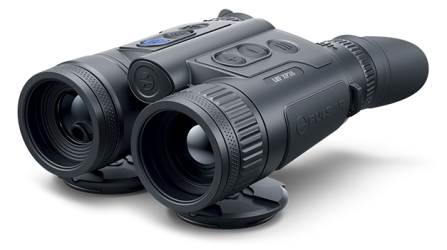 Merger LRF XP35
Termoviziniai žiūronai
Merger LRF XP35
Termoviziniai žiūronai
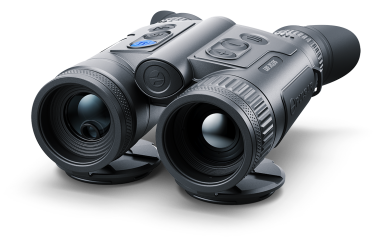 Merger LRF XQ35
Termoviziniai žiūronai
Nauja
Merger LRF XQ35
Termoviziniai žiūronai
Nauja Telos
Termovizoriai
Nauja
Telos
Termovizoriai
Nauja Axion Compact
Termovizoriai
Axion Compact
Termovizoriai
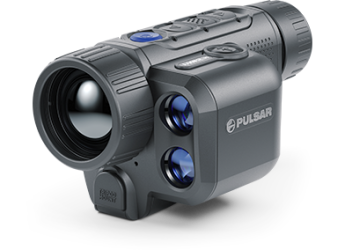 Axion 2 LRF
Termovizoriai
Axion 2 LRF
Termovizoriai
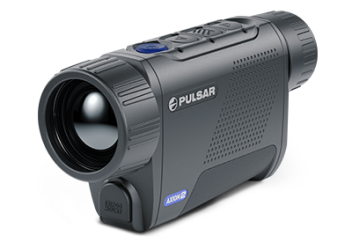 Axion 2
Termovizoriai
Nauja
Axion 2
Termovizoriai
Nauja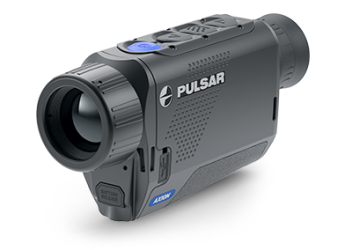 Axion XQ30 PRO
Termovizoriai
Axion XQ30 PRO
Termovizoriai
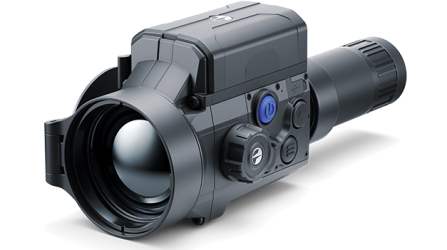 Krypton 2
Termovizoriai
Krypton 2
Termovizoriai
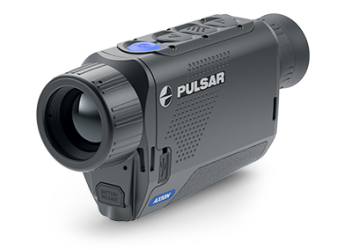 Axion XM30F
Termovizoriai
Nutraukta
Axion XM30F
Termovizoriai
Nutraukta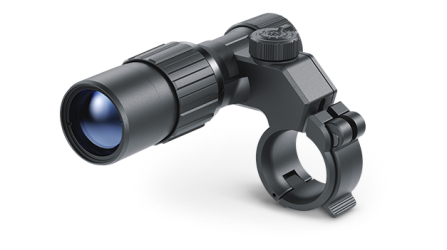 Pulsar Digex-XS
Išoriniai Infraraudonųjų Spindulių Apšvietimo Irenginiai
Pulsar Digex-XS
Išoriniai Infraraudonųjų Spindulių Apšvietimo Irenginiai
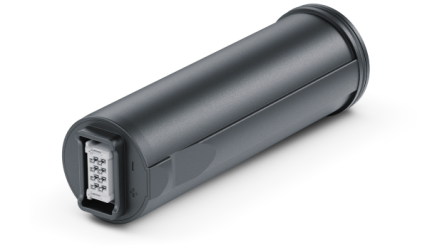 APS matinimo šaltiniai
Maitinimo šaltiniai
APS matinimo šaltiniai
Maitinimo šaltiniai
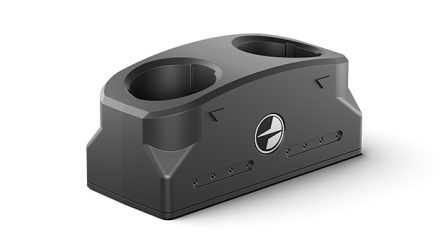 APS baterijų įkroviklis
Akumuliatoriaus kroviklis
APS baterijų įkroviklis
Akumuliatoriaus kroviklis
 LPS 7i baterijos
Maitinimo šaltiniai
LPS 7i baterijos
Maitinimo šaltiniai
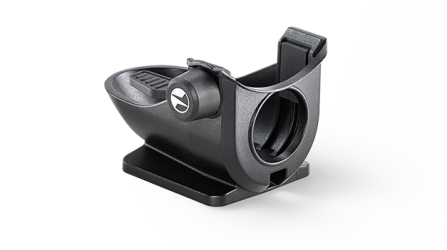 Telos LRF Tripod Adapter
Pulsar priedai
Telos LRF Tripod Adapter
Pulsar priedai
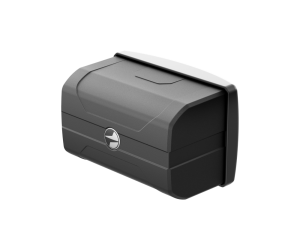 IPS matinimo šaltiniai
Maitinimo šaltiniai
IPS matinimo šaltiniai
Maitinimo šaltiniai
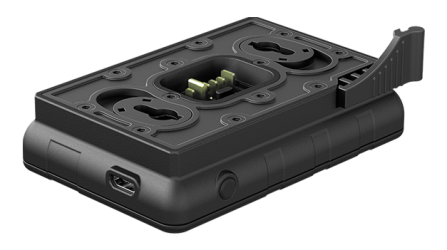 Akumuliatoriaus kroviklis IPS
Akumuliatoriaus kroviklis
Akumuliatoriaus kroviklis IPS
Akumuliatoriaus kroviklis
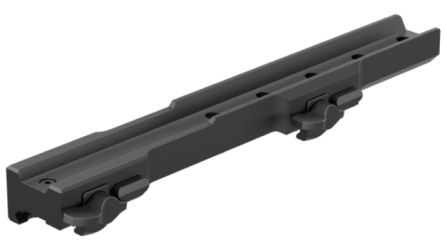 Laikikliai šautuvams
„Pulsar“ prietaisams
Laikikliai šautuvams
„Pulsar“ prietaisams
 H7 Spacers
Taisymo rinkiniai
Nauja
H7 Spacers
Taisymo rinkiniai
Nauja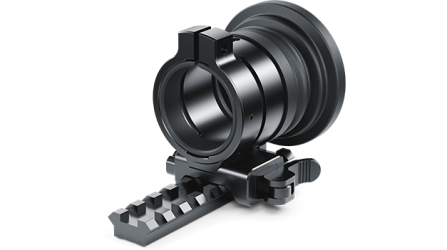 PSP-V Weaver Rail Adapter
Adapter
PSP-V Weaver Rail Adapter
Adapter
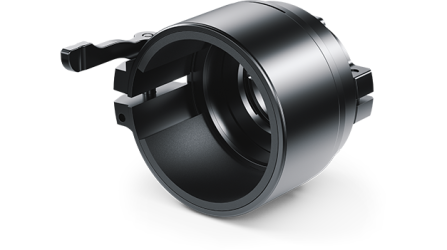 PSP Ring Adapters
Adapters
Nauja
PSP Ring Adapters
Adapters
Nauja PSP-B jungiamasis žiedas
Jungiamieji žiedai
PSP-B jungiamasis žiedas
Jungiamieji žiedai
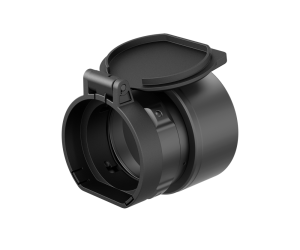 FN jungiamieji žiedai
Jungiamieji žiedai su dangteliu
FN jungiamieji žiedai
Jungiamieji žiedai su dangteliu
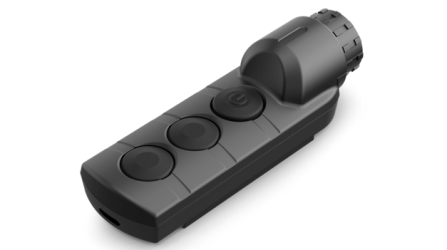 Belaidis nuotolinio valdymo pultelis
termovizoriams ir skaitmeniniams įrenginiams
Belaidis nuotolinio valdymo pultelis
termovizoriams ir skaitmeniniams įrenginiams
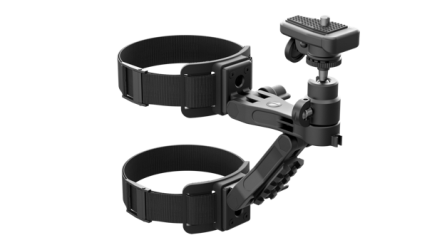 Tvirtinimas prie medžio
Pulsar priedai
Tvirtinimas prie medžio
Pulsar priedai
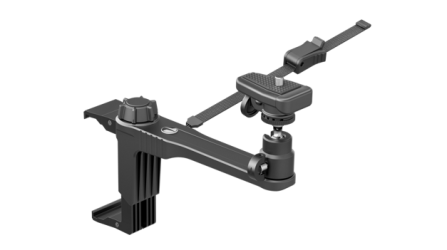 Window Frame Mount
Pulsar priedai
Window Frame Mount
Pulsar priedai
 Tvirtinimas prie stiklo
Pulsar priedai
Tvirtinimas prie stiklo
Pulsar priedai
 Kaklo dirželis
Pulsar priedai
Nauja
Kaklo dirželis
Pulsar priedai
Nauja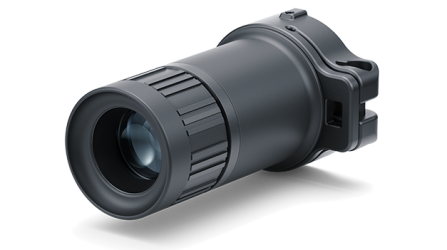 Monoklis „Pulsar 3x20 B“
Priedai
Monoklis „Pulsar 3x20 B“
Priedai
 Šiluminiai prišaudymo taikiniai
Priedai
Šiluminiai prišaudymo taikiniai
Priedai









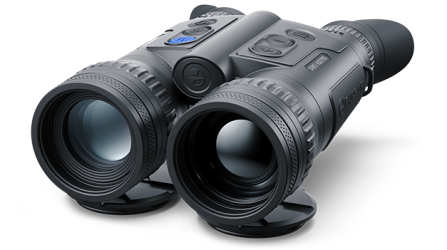
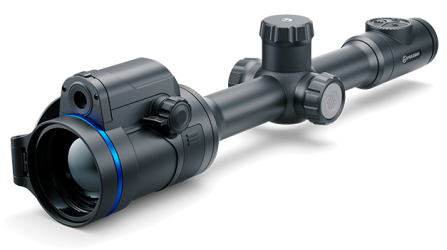
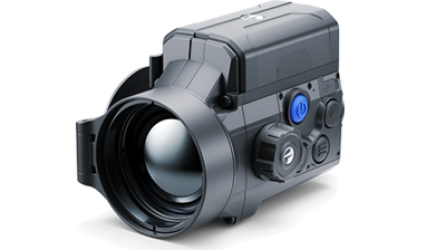
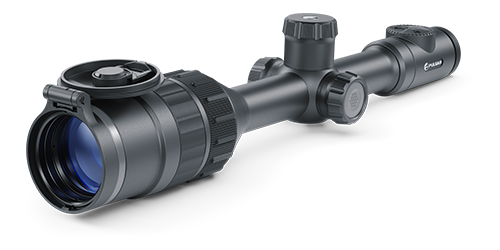
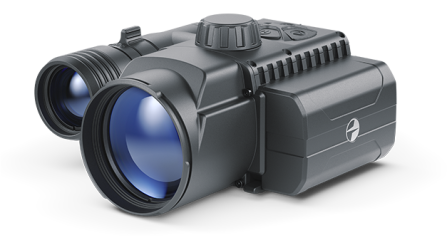
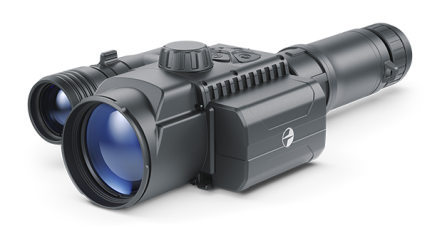



 English
English German
German French
French Spanish
Spanish Italiano
Italiano English
English Lietuvių
Lietuvių